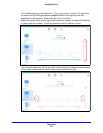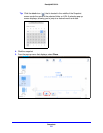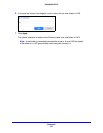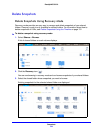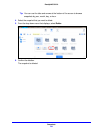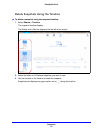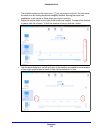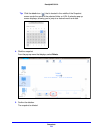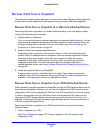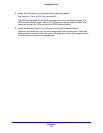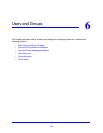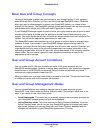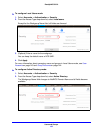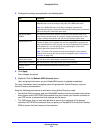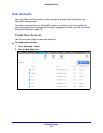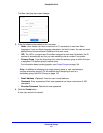
Snapshots
134
ReadyNAS OS 6.0
Recover Data from a Snapshot
The best way to protect against data loss is to back up your data. Regularly taking snapshots
of your data can also help prevent loss, because you can recover data from snapshots.
Recover Data from a Snapshot to a Network-Attached Device
Recovering data from a snapshot to a network-attached device, such as a laptop or tablet,
involves the following high-level steps:
1. Enable access to snapshots.
First, you must allow users to access snapshots from network-attached devices. You can
grant access to snapshots by selecting the Allow snapshot access check box when you
configure the properties of a folder. For more information, see
View and Change the
Properties of a Shared Folder on page 43.
2. Access a folder from a network-attached device.
Snapshots reside on the same volume as the folder (or LUN) from which they were
created. After you enable access to snapshots, users can access snapshots of folders
according to their access rights. Users who have access to a folder can access
snapshots of that folder. Users who do not have access to a folder cannot access
snapshots of that folder. For more information about accessing a folder from a
network-attached device, see
Access Shared Folders from a Network-Attached Device
on page 60.
3. Locate the snapshot data on the ReadyNAS.
Snapshot data is stored in subfolders within the folder. Each snapshot has its own
subfolder. Users who have read/write access to the folder can explore the data that is
available in a snapshot and recover any desired file or folder.
Recover Data from a Snapshot to an iSCSI-Attached Device
Strictly speaking, users who access the ReadyNAS through an iSCSI-attached device do not
have access to snapshots. However, you can clone a snapshot of a LUN to become a new
independent LUN, and then assign the LUN clone to a LUN group that the users can access.
In order to recover data from the LUN clone, users must access the LUN clone from the
same type of iSCSI-attached device that was used to format the parent of the clone. For
example, if the parent LUN was formatted using a Windows device, users must access the
LUN clone using a Windows device.
Recovering data from a snapshot to an iSCSI-attached device involves the following
high-level steps:
1. Clone a snapshot of a LUN.
See Clone Snapshots on page 125. Cloning a snapshot of a LUN creates a new
independent LUN.



